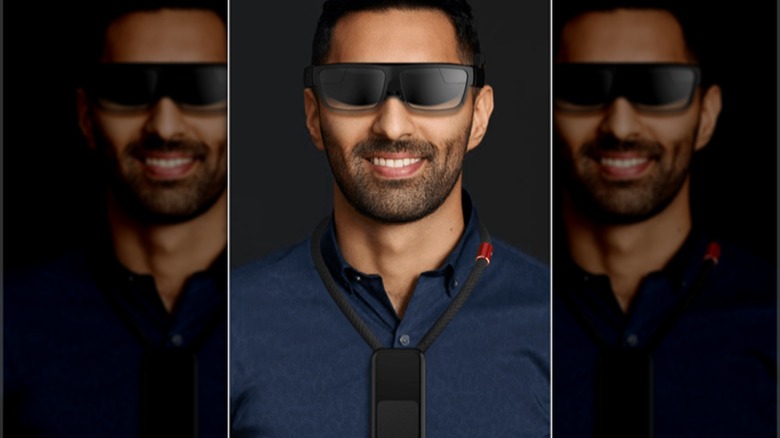Motorola Made A 5G Scarf And VR Is To Blame
We may receive a commission on purchases made from links.
Interest in the worlds of virtual and augmented reality has climbed again and it looks like Motorola and Verizon are the latest two companies to join the fray. Don't get confused, though, the two companies haven't come together to release a new VR/AR headset. Instead, Motorola and Verizon are making a 5G neckband that meant to give lighter VR headsets connectivity without having to bundle the needed components into the headset itself.
It really isn't that strange to see Verizon pushing more products that benefit from or require 5G data. After all, the company is making strides to get its 5G home internet service out there, and 5G is the hot new thing that big telecom is aiming to sell to everyone inside their coverage radius. With support for AR and VR once more on the rise, it might not be a bad thing to have extra connectivity options for users who want to invest in one of the more lightweight headsets. Further, it would allow future developers to cut out those connectivity parts and instead team up with Verizon or Motorola. That could help cut down on the cost of AR and VR head-mounted displays, too.
The case for 5G wearables
The thought of buying a wearable to get 5G instead of it being inside your headset might seem a little weird. After all, does it really save any money? That really all depends on how much the band or wearable ends up costing. Plus you have to take into account how much a headset without those connectivity functions would cost, too. At the moment, Motorola and Verizon haven't shared any prices. However, it could open the door for scaling VR applications – like movie theaters, and more.
"Motorola's wearable neckband and ultra-lightweight AR smart glasses leverage Verizon's 5G Ultra Wideband network and mobile edge compute platform, enabling us to deliver immersive technology in many fields, such as sports training and fan experiences, as well as making VR theaters scalable," Brian Mecum shared in the blog post for the new device.
Of course, wearing a neckband that looks massive on you might not be on everyone's list of technological advancements. But, if the tech proves to be useful, and people start to make use of it, we could see it take more form-fitting shapes in the future. It could even end up working as a bracelet or even something small enough to attach to your clothing that doesn't look as out-of-place.

